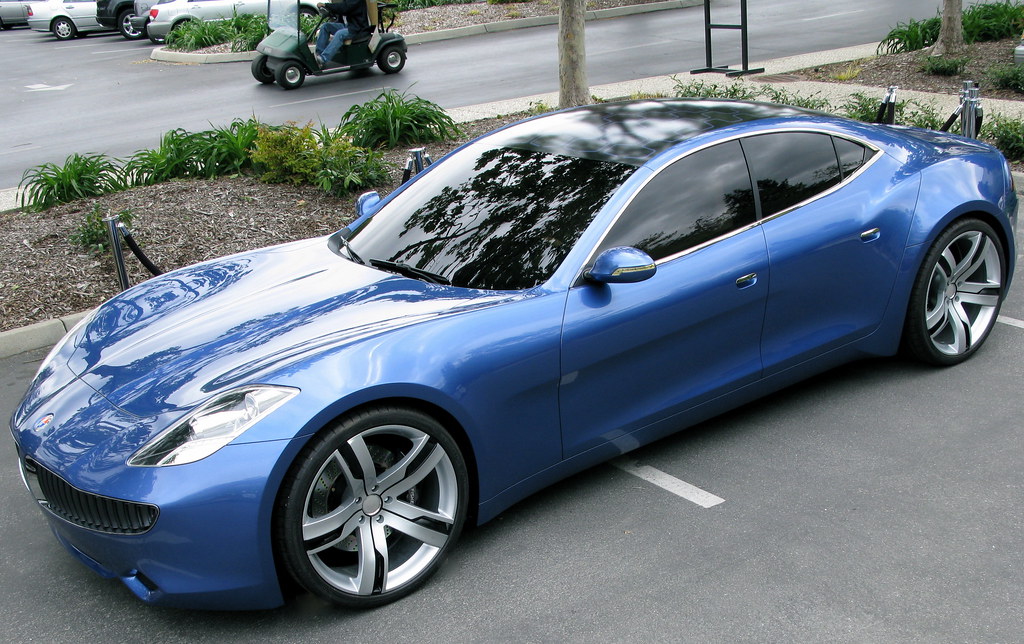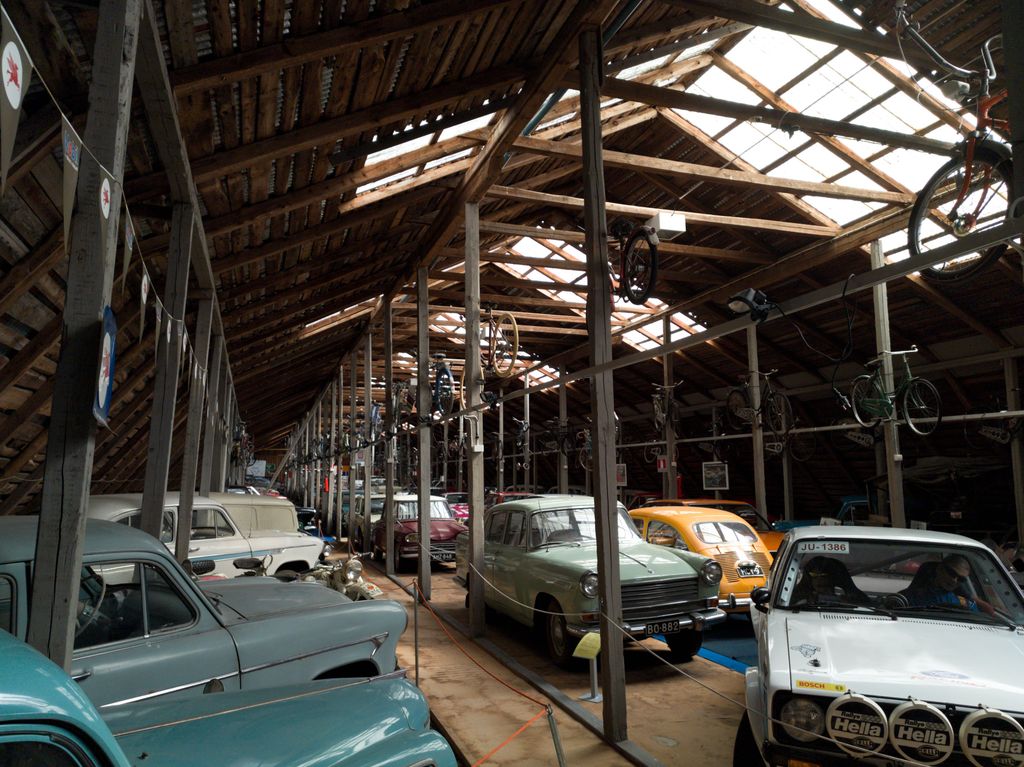
In the sprawling, often overlooked corners of the United States, where history sometimes settles quietly beneath layers of dust and forgotten dreams, a truly extraordinary discovery has emerged. It’s a place that whispers tales of a glorious past, now shrouded in an eerie silence—an abandoned automotive museum, home to over 200 classic vehicles, each a testament to a golden age of engineering and design. Documented by the intrepid explorers behind the Classic Car Rescue YouTube channel, this ‘car graveyard’ offers a captivating glimpse into a collection seemingly frozen in time.
The initial footage is strikingly devoid of human intervention, without commentary or music, allowing the hushed atmosphere of the neglected facility to speak volumes. As the camera glides through the dimly lit expanse, viewers are transported into a world where once-gleaming machines now stand as monuments to decay, their vibrant exteriors muted by a thick, uniform coating of dust. The exact location of this remarkable ‘barn’ remains a closely guarded secret, a deliberate choice to deter unwanted visitors and preserve the mystique of the find. However, it is widely believed to be hidden somewhere within the vast American landscape, adding another layer of intrigue to its already compelling narrative.
This isn’t just a collection of old cars; it’s a profound historical archive, an accidental preservation site. While the vehicles undoubtedly require significant attention to reclaim their former splendor, the fact that they have been housed indoors provides a crucial advantage. Shielded from the relentless assault of the elements—the biting wind, the corrosive rain, the scorching sun—these classics have avoided the severe rust that often claims such forgotten treasures. What lies within this silent sanctuary is not merely metal and leather, but a tangible link to an era of unparalleled automotive craftsmanship and a beckoning call for restoration.
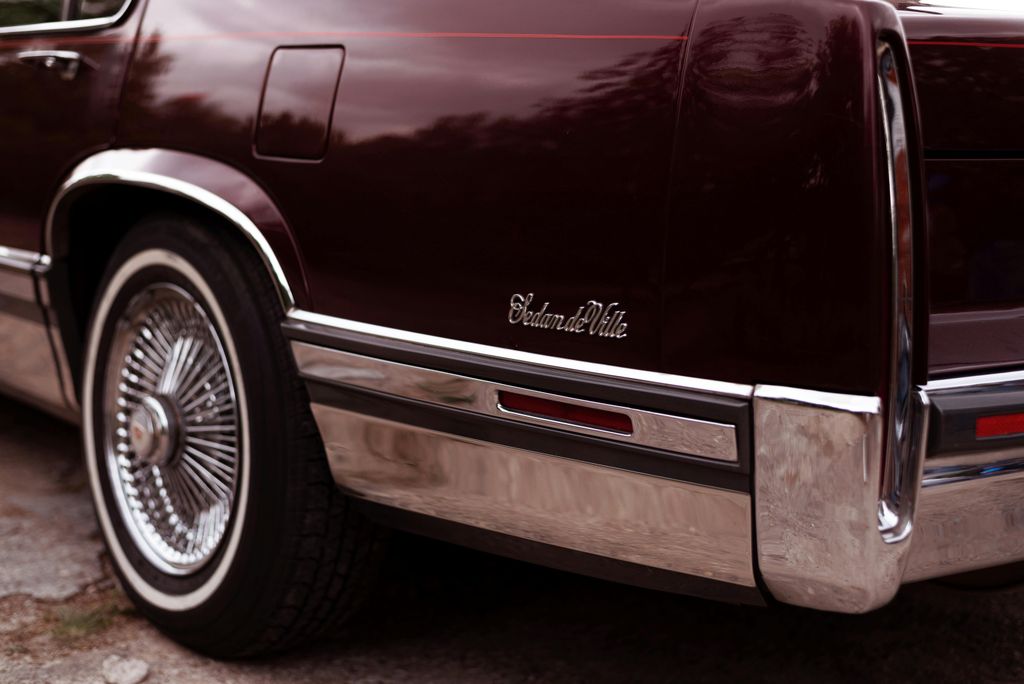
Among the silent sentinels populating this forgotten museum are several classic Cadillacs, standing as solemn reminders of an era when this marque was synonymous with American luxury and innovation. These vehicles, even under a thick blanket of dust, exude an undeniable aura of opulence and grandeur. Cadillacs of their vintage were not merely modes of transport; they were statements, symbols of success and aspirational design, setting benchmarks for comfort, style, and engineering prowess in the mid-20th century.
Each curve, each chrome detail, each robust fender on these Cadillacs tells a story of an automotive golden age. They were built with an uncompromising attention to detail, boasting powerful engines and interiors that rivaled the finest living rooms. To see them here, preserved in this strange limbo, evokes a sense of both melancholy for their current state and immense excitement for the potential to revive their inherent elegance and power. Their presence underscores the sheer scale and quality of this extraordinary, abandoned collection.

Sharing the expansive space with their Cadillac counterparts are several classic Lincolns, another pillar of American automotive prestige. Lincolns, often chosen by presidents and dignitaries, were renowned for their distinctive styling, robust build quality, and an understated elegance that differentiated them from their more flamboyant rivals. Their presence in such numbers within this collection speaks to the depth and breadth of the original owner’s discerning taste, spanning the spectrum of American luxury.
From their iconic grilles to their expansive, comfortable interiors, these Lincolns embody a particular vision of luxury that prioritized smooth rides and dignified aesthetics. Although time and neglect have taken their toll, the underlying quality of their craftsmanship is still evident. Imagine the stories these cars could tell, the journeys they embarked on, before they settled into this long, quiet slumber. Their potential for revival represents a chance to reconnect with a significant chapter in American automotive heritage.
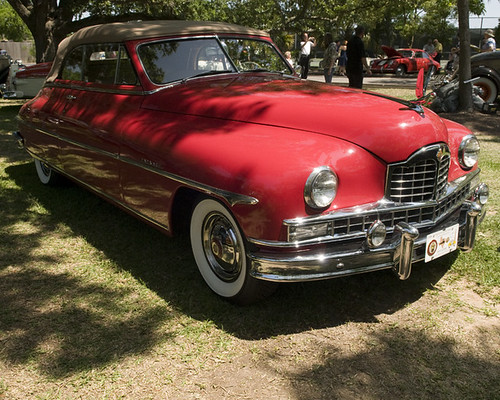
Peeking through the dust, the distinct lines of a Packard Ragtop offer a truly rare and delightful sight within this impressive collection. Packard, a name that once stood shoulder-to-shoulder with Cadillac and Lincoln in the pantheon of American luxury, eventually faded into history, making surviving examples, especially convertibles, incredibly prized. This particular Ragtop, with its collapsible roof, would have been a pinnacle of open-air motoring, embodying freedom and sophistication.
To encounter a Packard in any condition is a testament to its enduring legacy, but to find a Ragtop in this indoor, relatively protected environment is a special kind of treasure. It harks back to an era when automobiles were handcrafted works of art, not just mass-produced commodities. The potential to see this elegant machine restored to its full glory, with its top down and engine purring, is a dream that captivates anyone who appreciates the finer points of automotive history and design.
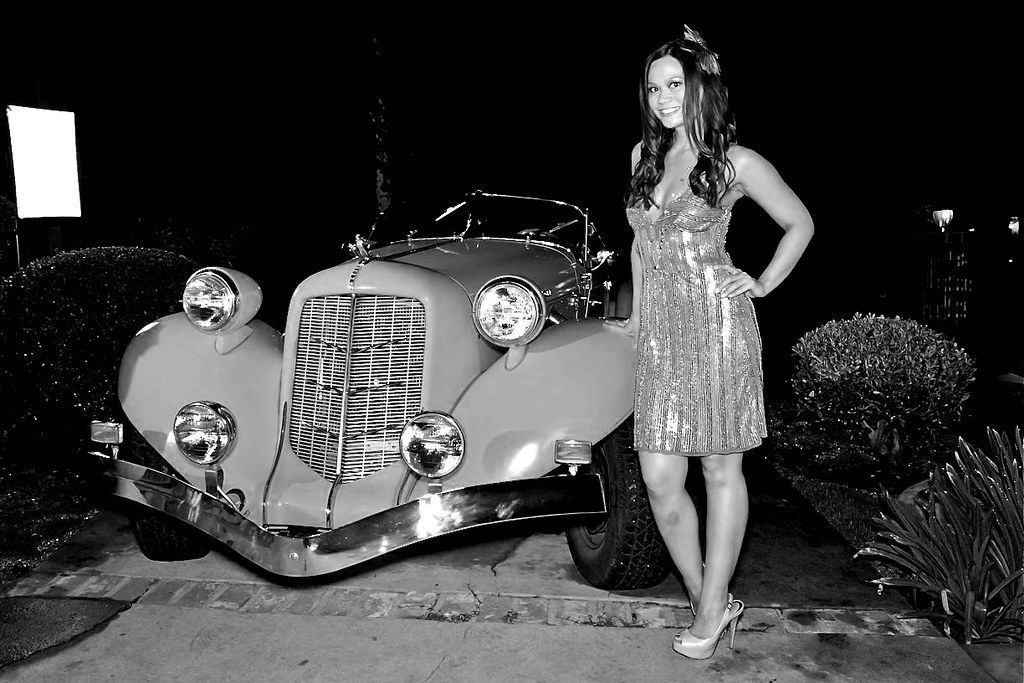
Among the more flamboyant and distinctly styled vehicles spotted within this fascinating ‘car graveyard’ is an Auburn Speedster. This model, instantly recognizable by its boat-tail design and sweeping, aerodynamic lines, is a true icon of the Art Deco era of automotive design. Auburns, particularly the Speedster, were celebrated for their daring aesthetics and performance, embodying the optimism and flair of the pre-World War II period in American motoring.
Finding an Auburn Speedster in such a collection is akin to discovering a lost masterpiece. These cars were produced in relatively limited numbers and represented the pinnacle of automotive fashion and engineering for their time. Even under a veil of dust, its distinctive form commands attention, hinting at the vibrant life it once led. The opportunity to unearth and restore such a distinctive piece of automotive history is precisely what fuels the passion of classic car enthusiasts, offering a direct link to an age of unparalleled style and innovation.
Read more about: Sculpted for the Ages: MotorTrend’s Definitive Look at the Most Visually Arresting Cars from Every Iconic Marque
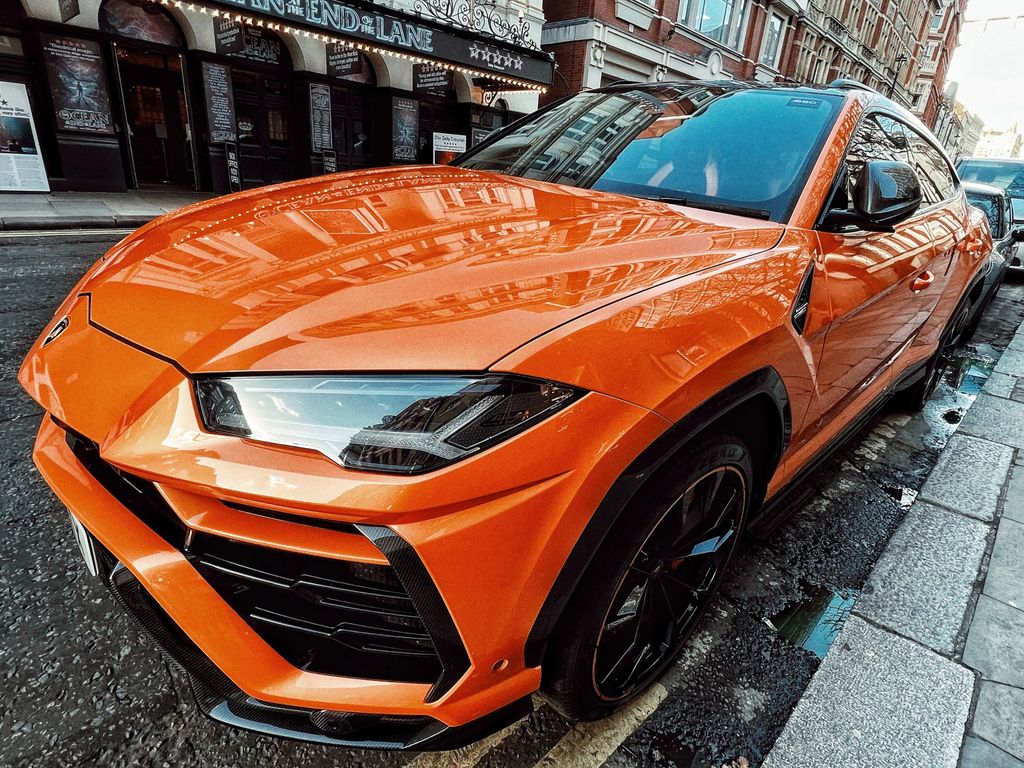
No American classic car collection would be complete without a strong representation of muscle, and this abandoned museum does not disappoint. The presence of several ‘old Shelby’s’ immediately raises the pulse of any automotive aficionado. Shelby cars, born from the legendary partnership between Ford and racing icon Carroll Shelby, are synonymous with raw power, high performance, and an unrivaled racing heritage. These vehicles represent the very essence of American muscle, designed to dominate both the track and the open road.
One commentator, clearly discerning the immense value, estimated that these Shelby models alone could be worth around $500,000 (£403,000) – a staggering figure that underscores the incredible riches hidden within this dusty warehouse. While the specifics of each Shelby model are not fully detailed in the footage, the mere mention suggests a treasure trove of performance legends. These are cars that ignite passion, that speak to an era of untamed power and aggressive styling, and their potential for restoration promises to unleash their formidable spirit once more.
The prospect of these legendary machines being returned to their former glory is a compelling narrative in itself. Each Shelby, even covered in the accumulated dust of decades, retains its menacing silhouette and the promise of exhilarating performance. Their presence is a powerful reminder of a time when speed and style converged to create automotive legends, and their rediscovery offers a thrilling opportunity for a new generation to experience that legacy firsthand. The value, both monetary and historical, is immense.
The journey through this remarkable automotive time capsule continues, leading us deeper into its silent halls where more legends of the road patiently await their second act. Beyond the initial awe-inspiring discoveries of American luxury and muscle, this abandoned museum holds even more captivating stories and machines. Each vehicle here is a testament to different facets of automotive prowess, from the enduring roar of iconic American muscle to the quiet sophistication of European luxury, and even engineering marvels that dared to defy convention, underscoring the collection’s profound historical importance and its enigmatic curator’s discerning taste.
As we navigate the dust-laden aisles, the collection’s scope truly impresses, revealing that the original owner’s passion spanned far and wide. It encompassed not just celebrated American icons but also international stalwarts and groundbreaking innovators. These vehicles are more than just metal and rubber; they are tangible chapters from a vibrant history, relics from an era where design, power, and prestige were forged with distinct purpose and unparalleled craftsmanship. The thrill of imagining their eventual revival is a powerful narrative woven throughout this extraordinary find, a beckoning call for enthusiasts to unearth these forgotten treasures.
Car Model Information: 2022 Ford Shelby GT500 Base
Name: Shelby Mustang
Caption: 1965 Shelby Mustang GT350
Manufacturer: Unbulleted list
Aka: Unbulleted list
Production: Unbulleted list
Designer: John Chun
Assembly: Unbulleted list
Class: Unbulleted list
Platform: Unbulleted list
Related: Ford Mustang (first generation),Ford Mustang (fifth generation)
Layout: Front-engine, rear-wheel-drive layout
Categories: 1970s cars, 2000s cars, 2010s cars, 2020s cars, All Wikipedia articles written in American English
Summary: The Shelby Mustang is a high-performance variant of the Ford Mustang built by Shelby American from 1965 to 1967 and by the Ford Motor Company from 1968 to 1970.
In 2005, Ford revived the Shelby nameplate for a high-performance model of the fifth-generation Ford Mustang.
Get more information about: Shelby Mustang
Buying a high-performing used car >>>
Brand: Ford Model: Shelby
Price: $239,999 Mileage: 14 mi.

Emerging from the shadowy corners, a number of classic Ford Mustangs stand as undeniable symbols of American automotive freedom and accessible performance. While our earlier discoveries touched upon high-performance Shelby variants, the sheer presence of numerous “regular” Ford Mustangs within this extensive collection speaks volumes about the broader appeal and enduring legacy of this legendary nameplate. From their explosive debut, these cars democratized the dream of owning a sporty, powerful vehicle, offering exhilarating styling and spirited engines that resonated deeply with a generation yearning for excitement on the open road.
The Mustang’s silhouette is instantly recognizable, a testament to its timeless design that continues to captivate enthusiasts. It wasn’t just driven; it was experienced—a cultural phenomenon defining an era of youthful exuberance and automotive innovation. Seeing these examples, even under the thick, uniform film of decades-old dust, evokes profound nostalgia for a time when cruising was a cherished pastime and the distinct rumble of a V8 was the quintessential soundtrack to countless adventures. Their quantity here vividly illustrates their widespread popularity and the profound impact they carved into car culture.
Restoring these Mustangs would not only involve meticulously bringing back their individual gleam and mechanical integrity but also reigniting a significant piece of shared cultural history. Each model, whether a well-appointed coupe or a spirited fastback, carries the inherent promise of exhilarating drives and the unadulterated joy of classic American motoring. For dedicated enthusiasts, the opportunity to revitalize these cherished icons is akin to reassembling lost pieces of a national automotive mosaic, each one poised to gallop once more with renewed vigor and spirit.
Car Model Information: 1966 Ford Mustang Base
Name: Ford Mustang
Caption: 2018 Ford Mustang GT 5.0
Aka: Ford T5 (Germany)
Manufacturer: Ford Motor Company
Production: March 1964 – present
ModelYears: 1965–present
Class: Unbulleted list
BodyStyle: Unbulleted list
Layout: Front-engine, rear-wheel-drive layout
Categories: 1970s cars, 1980s cars, 1990s cars, 2+2 coupés, 2000s cars
Summary: The Ford Mustang is a series of American automobiles manufactured by Ford. In continuous production since 1964, the Mustang is currently the longest-produced Ford car nameplate. Currently in its seventh generation, it is the fifth-best selling Ford car nameplate. The namesake of the “pony car” automobile segment, the Mustang was developed as a highly styled line of sporty coupes and convertibles derived from existing model lines, initially distinguished by “long hood, short deck” proportions.
Originally predicted to sell 100,000 vehicles yearly, the 1965 Mustang became the most successful vehicle launch since the 1927 Model A. Introduced on April 17, 1964 (16 days after the Plymouth Barracuda), over 400,000 units were sold in its first year; the one-millionth Mustang was sold within two years of its launch. In August 2018, Ford produced the 10-millionth Mustang; matching the first 1965 Mustang, the vehicle was a 2019 Wimbledon White convertible with a V8 engine.
The success of the Mustang launch led to multiple competitors from other American manufacturers, including the Chevrolet Camaro and Pontiac Firebird (1967), AMC Javelin (1968), and Dodge Challenger (1970). It also competed with the Plymouth Barracuda, which was launched around the same time. The Mustang also had an effect on designs of coupes worldwide, leading to the marketing of the Toyota Celica and Ford Capri in the United States (the latter, by Lincoln-Mercury). The Mercury Cougar was launched in 1967 as a unique-bodied higher-trim alternative to the Mustang; during the 1970s, it included more features and was marketed as a personal luxury car.
From 1965 until 2004, the Mustang shared chassis commonality with other Ford model lines, staying rear-wheel-drive throughout its production. From 1965 to 1973, the Mustang was derived from the 1960 Ford Falcon compact. From 1974 until 1978, the Mustang (denoted Mustang II) was a longer-wheelbase version of the Ford Pinto. From 1979 until 2004, the Mustang shared its Fox platform chassis with 14 other Ford vehicles (becoming the final one to use the Fox architecture). Since 2005, Ford has produced two generations of the Mustang, each using a distinct platform unique to the model line.
Through its production, multiple nameplates have been associated with the Ford Mustang series, including GT, Mach 1, Boss 302/429, Cobra (separate from Shelby Cobra), and Bullitt, along with “5.0” fender badging (denoting 4.9 L OHV or 5.0 L DOHC V8 engines).
Get more information about: Ford Mustang
Buying a high-performing used car >>>
Brand: Ford Model: Mustang
Price: $32,991 Mileage: 98,811 mi.
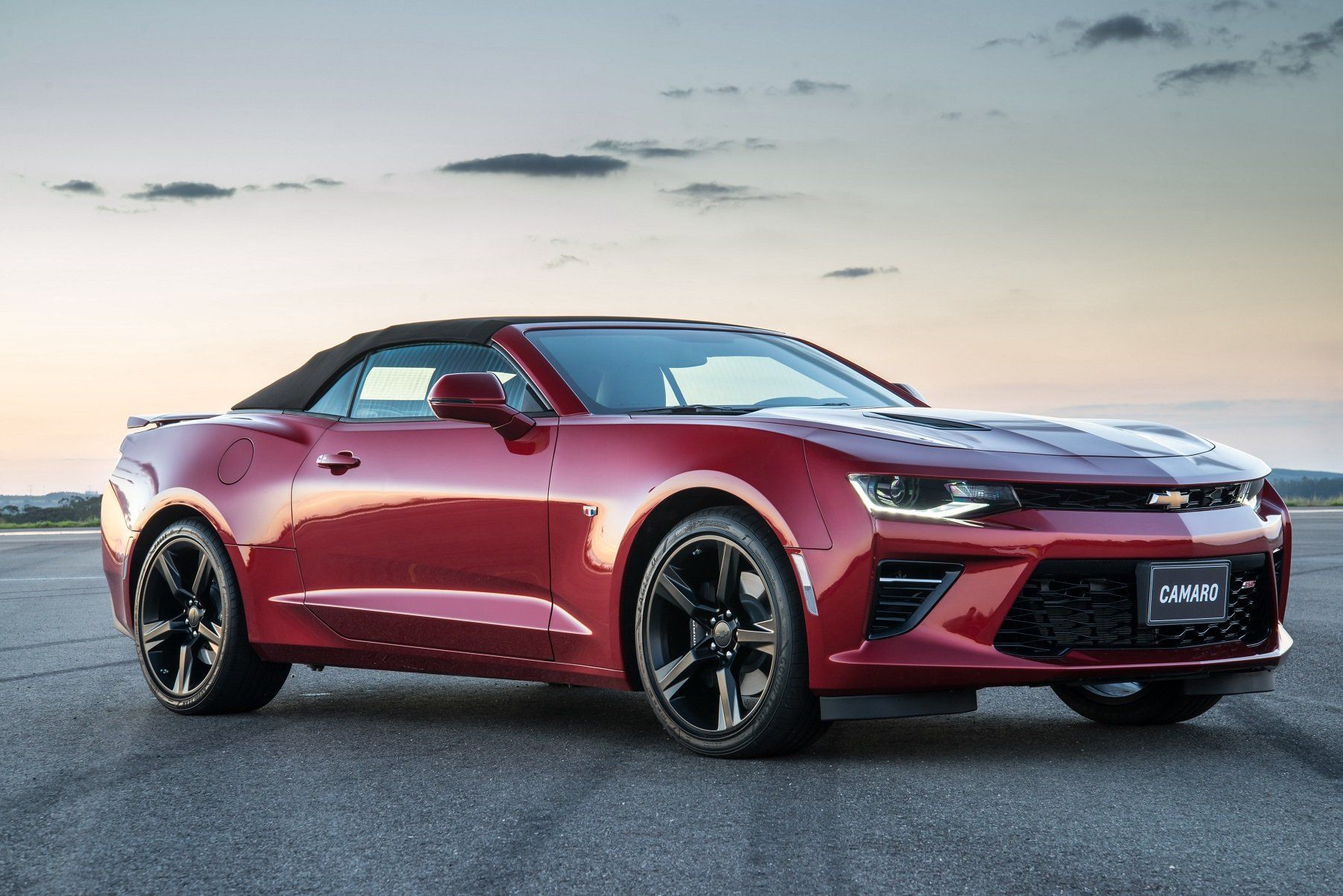
Adding another formidable layer of American muscle to this awe-inspiring ‘graveyard’ is the unmistakable presence of the Chevrolet Camaro Z28, a true titan of the performance car world. This specific variant was meticulously engineered for uncompromised performance, designed to make an indelible statement with its aggressive aesthetics and potent powertrain. The Z28 represents the fierce competition and relentless innovation that defined the exhilarating muscle car wars of the 1960s and 70s, a battle waged for supremacy on drag strips and public roads alike.
Adding another formidable layer of American muscle to this awe-inspiring ‘graveyard’ is the unmistakable presence of the Chevrolet Camaro Z28, a true titan of the performance car world. This specific variant was meticulously engineered for uncompromised performance, designed to make an indelible statement with its aggressive aesthetics and potent powertrain. The Z28 represents the fierce competition and relentless innovation that defined the exhilarating muscle car wars of the 1960s and 70s, a battle waged for supremacy on drag strips and public roads alike.
The Z28 was never merely about raw brute force; it was a meticulously calibrated machine, often featuring specialized suspension setups, upgraded braking systems, and finely tuned engine configurations that distinctly set it apart from standard Camaros. Its bold, predatory lines, coupled with iconic badging, unequivocally signal a car purpose-built for speed and precision handling—truly a driver’s machine. To discover these legendary machines, albeit in a state of suspended animation under dust, offers a tantalizing glimpse into an era when horsepower reigned supreme and the thrill of acceleration was king.
The painstaking restoration of a Chevrolet Camaro Z28 is often considered a profound labor of love, transforming a dusty relic into a roaring beast capable of recapturing its formidable former glory. These cars are far more than just vehicles; they are the tangible embodiment of a fierce competitive spirit, a powerful testament to engineering prowess that pushed boundaries, and an enduring symbol of America’s rich performance heritage. Their rediscovery is a significant highlight, promising to reignite the passion for a truly iconic muscle car.
Car Model Information: 2015 Dodge Challenger SXT Plus
Name: Chevrolet Camaro
Manufacturer: Chevrolet
Production: 1966–2002,2009–2023
ModelYears: 1967–2002,2010–2024
Class: Pony car
BodyStyle: coupe,convertible
Platform: GM F platform,GM Zeta platform,GM Alpha platform
Layout: Front-engine, rear-wheel-drive layout
Categories: 1970s cars, 1980s cars, 1990s cars, 2+2 coupés, 2000s cars
Summary: The Chevrolet Camaro is a mid-size American automobile manufactured by Chevrolet, classified as a pony car. It first went on sale on September 29, 1966, for the 1967 model year and was designed to compete with the Ford Mustang. The Camaro shared its platform and major components with the Firebird, produced by General Motors’ Pontiac division that was also introduced for the 1967 model year.
Four distinct generations of the Camaro were developed before production ended in 2002. The nameplate was revived on a concept car that evolved into the fifth-generation Camaro; production started on March 16, 2009.
Production of the sixth generation of the Camaro ended in December 2023, for the 2024 model year.
Get more information about: Chevrolet Camaro
Buying a high-performing used car >>>
Brand: Chevrolet Model: Camaro Z28
Price: $16,467 Mileage: 95,860 mi.
Read more about: 10 Dirt-Cheap Classic American Cars That Turn Heads Everywhere They Go for Under $10,000
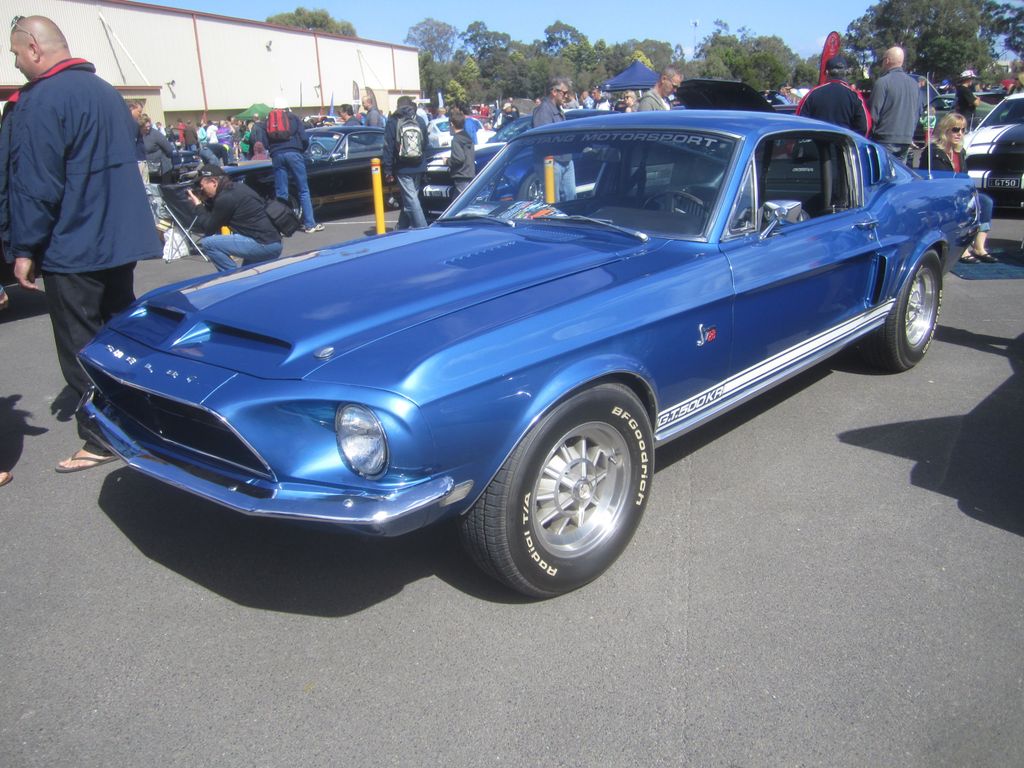
While our earlier observations acknowledged the exciting presence of general Shelby models, the context explicitly highlights a specific crown jewel: the Ford Mustang Shelby GT500KR. This is no ordinary Mustang, nor simply just another Shelby; the “KR” suffix stands for “King of the Road”—a fitting title for what was, at its late 1960s production pinnacle, the most powerful Mustang ever conceived. Its remarkable presence here is astonishing, a profound testament to the curator’s discerning eye for the zenith of performance machinery.
While our earlier observations acknowledged the exciting presence of general Shelby models, the context explicitly highlights a specific crown jewel: the Ford Mustang Shelby GT500KR. This is no ordinary Mustang, nor simply just another Shelby; the “KR” suffix stands for “King of the Road”—a fitting title for what was, at its late 1960s production pinnacle, the most powerful Mustang ever conceived. Its remarkable presence here is astonishing, a profound testament to the curator’s discerning eye for the zenith of performance machinery.
The GT500KR was an absolute beast in every sense, equipped with a gargantuan Cobra Jet engine that delivered staggering horsepower and prodigious torque, cementing its legendary status. It was a car designed not just for sheer speed, but for outright dominance, seamlessly blending aggressive styling with an unparalleled racing-derived performance pedigree. Even beneath layers of grime and dust, the formidable lines and unmistakable, menacing stance of a GT500KR radiate an aura of raw, untamed power, unmistakably suggesting a colossal legacy waiting impatiently to be unleashed.
To uncover such an exceptionally rare and historically significant machine in this remarkably preserved indoor condition is, quite simply, a dream come true for serious collectors and dedicated restorers. The immense potential to meticulously bring this authentic “King of the Road” back to vibrant life is an endeavor that transcends mere mechanical repair; it is a sacred act of preserving irreplaceable automotive royalty, ensuring its iconic roar and legendary performance can once again grace the asphalt. This specific Shelby is undeniably a monumental find within the already incredible array of vehicles.
Car Model Information: 2015 Dodge Challenger SXT Plus
Name: Shelby Mustang
Caption: 1965 Shelby Mustang GT350
Manufacturer: Unbulleted list
Aka: Unbulleted list
Production: Unbulleted list
Designer: John Chun
Assembly: Unbulleted list
Class: Unbulleted list
Platform: Unbulleted list
Related: Ford Mustang (first generation),Ford Mustang (fifth generation)
Layout: Front-engine, rear-wheel-drive layout
Categories: 1970s cars, 2000s cars, 2010s cars, 2020s cars, All Wikipedia articles written in American English
Summary: The Shelby Mustang is a high-performance variant of the Ford Mustang built by Shelby American from 1965 to 1967 and by the Ford Motor Company from 1968 to 1970.
In 2005, Ford revived the Shelby nameplate for a high-performance model of the fifth-generation Ford Mustang.
Get more information about: Shelby Mustang
Buying a high-performing used car >>>
Brand: Ford Model: Mustang Shelby GT500KR
Price: $16,467 Mileage: 95,860 mi.

Amidst the resounding chorus of powerful American V8s and imposing muscle car legends, an unexpected yet magnificent sight gracefully emerges: multiple classic Rolls-Royce automobiles. Their surprising presence within this predominantly American collection speaks volumes about the original owner’s eclectic, sophisticated, and global taste, extending beyond domestic borders to embrace the epitome of European luxury and unparalleled, meticulous craftsmanship. These majestic cars stand as serene and dignified counterpoints, their elegant forms hinting at a distinctly different, yet profound, kind of automotive excellence.
Amidst the resounding chorus of powerful American V8s and imposing muscle car legends, an unexpected yet magnificent sight gracefully emerges: multiple classic Rolls-Royce automobiles. Their surprising presence within this predominantly American collection speaks volumes about the original owner’s eclectic, sophisticated, and global taste, extending beyond domestic borders to embrace the epitome of European luxury and unparalleled, meticulous craftsmanship. These majestic cars stand as serene and dignified counterpoints, their elegant forms hinting at a distinctly different, yet profound, kind of automotive excellence.
A Rolls-Royce has always been, and continues to be, a definitive statement of understated opulence, an enduring symbol of meticulous engineering and artisanal quality that effortlessly transcends eras. From the iconic Spirit of Ecstasy ornament adorning its distinguished grille to the sumptuous, handcrafted interiors crafted from the finest materials, every exquisite detail speaks of a timeless legacy built firmly upon a foundation of prestige, supreme comfort, and unparalleled refinement. To witness these venerable machines nestled amongst robust American iron, gathering dust, creates a striking visual dichotomy—a fascinating fusion of two distinct yet silently coexisting automotive philosophies.
The ambitious prospect of painstakingly restoring these majestic machines to their former, resplendent glory is undoubtedly a grand undertaking, but one that promises immense aesthetic and historical rewards. Reclaiming the serenely smooth ride, the almost whisper-quiet engine, and the impeccably mirror-like finish of a classic Rolls-Royce would be akin to meticulously resurrecting a cherished piece of motoring heritage, one intrinsically defined by grace, exclusivity, and an unmatched sense of occasion. Their inclusion in this ‘car graveyard’ profoundly elevates the collection from merely impressive to truly extraordinary, showcasing a global appreciation for automotive artistry.
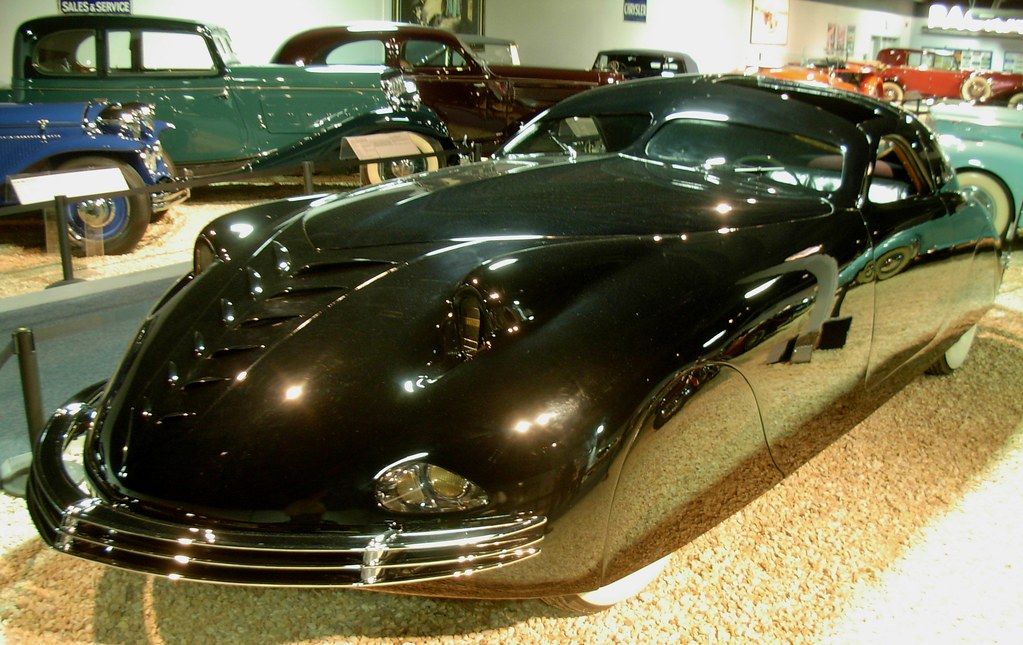
Perhaps one of the most unexpected and truly revolutionary discoveries, as enthusiastically mentioned by a keen commentator within this abandoned museum, is the astonishing presence of a “couple of Cords,” specifically referencing the groundbreaking Model 810. The Cord 810, dramatically introduced in the mid-1930s, was a vehicle profoundly ahead of its time, universally renowned for its pioneering front-wheel-drive system and its daring, strikingly unadorned ‘coffin nose’ design, distinctively featuring innovative retractable headlights—features and innovations that were incredibly futuristic for its era.
This remarkable car was a bold and audacious statement in automotive design and engineering, representing a radical departure from established norms that challenged conventional thinking and irrevocably set new standards for an entire industry. Its distinctively horizontal grille, conspicuously devoid of an external radiator shell, and its sleek, aerodynamic, and streamlined body were instantly recognizable and incredibly stylish, making it a true head-turner. To find even one Cord 810 in such an extensive collection would be remarkable, but the exciting mention of a “couple” strongly suggests an even deeper appreciation for its singular place in automotive history by the museum’s original, visionary owner.
The Cord 810 wasn’t merely visually striking; it was, at its core, a profound marvel of mechanical ingenuity and forward-thinking design. Its revolutionary engineering and sophisticated design language unequivocally positioned it as a highly coveted collector’s item, celebrated universally for its unique and harmonious blend of high art and cutting-edge science. Bringing these extraordinary Cords back to life would be to meticulously revive a pivotal piece of automotive avant-garde, allowing a new generation to fully experience the daring, innovative spirit of a car that truly pushed the boundaries of what was thought possible. It dramatically underscores the exceptional depth and profound historical significance of this entire abandoned collection.
Car Model Information: 1936 Cord 810
Caption: 1937 812 Sedan
Name: Cord 810/812
Manufacturer: Cord Automobile
Production: 1936–1937
ModelYears: 1936–1937
Engine: V8 engine
Layout: Front-mid-engine, front-wheel-drive layout
Categories: 1930s cars, All articles with unsourced statements, Articles with short description, Articles with unsourced statements from February 2023, Articles with unsourced statements from July 2013
Summary: The Cord 810, and later Cord 812, was a luxury automobile produced by the Cord Automobile division of the Auburn Automobile Company in 1936 and 1937. It was the first American-designed and built front wheel drive car with independent front suspension. It was preceded by Cord’s own 1929 Cord L-29, and the French 1934 Citroën Traction Avant front wheel drive cars, but the 810/812 was commercially less successful than these.
The Cord 810 and 812 were also the first production cars to feature hidden/pop-up headlights. Additionally, the radical new styling of its nose completely replaced the traditional radiator grille, in favor of horizontal louvers, that curved all around the sides of the nose, earning the car’s styling the nickname of ‘coffin nose’.
Get more information about: Cord 810/812
Buying a high-performing used car >>>
Brand: Cord Model: 810
Price: $49,950 Mileage: 0 mi.
As our immersive exploration of this automotive ‘graveyard’ draws to its reflective close, the initial sense of wonder and intrigue only intensifies. What began as a mere discovery has gracefully evolved into a deep and compelling narrative of forgotten grandeur, a poignant, silent testament to the boundless ingenuity, daring innovation, and fervent passion that so vividly shaped the golden age of motoring. The over 200 vehicles, now slumbering under their blanket of accumulated dust, are far more than just derelict machines; they collectively represent a priceless historical archive, waiting patiently for the touch of a skilled restorer’s hand to awaken their dormant spirits. Each Cadillac, each Mustang, each Rolls-Royce, and every revolutionary Cord holds within its frame the boundless potential to be magnificently reborn, to once again grace the open roads and captivatingly mesmerize onlookers with its timeless appeal. This abandoned museum, a hidden gem nestled somewhere in the vast American landscape, truly is an unparalleled treasure trove, beckoning enthusiasts to dream vividly of the glorious day these magnificent automotive legends will thunderously roar back to life, triumphantly reclaiming their rightful place in the annals of history.



